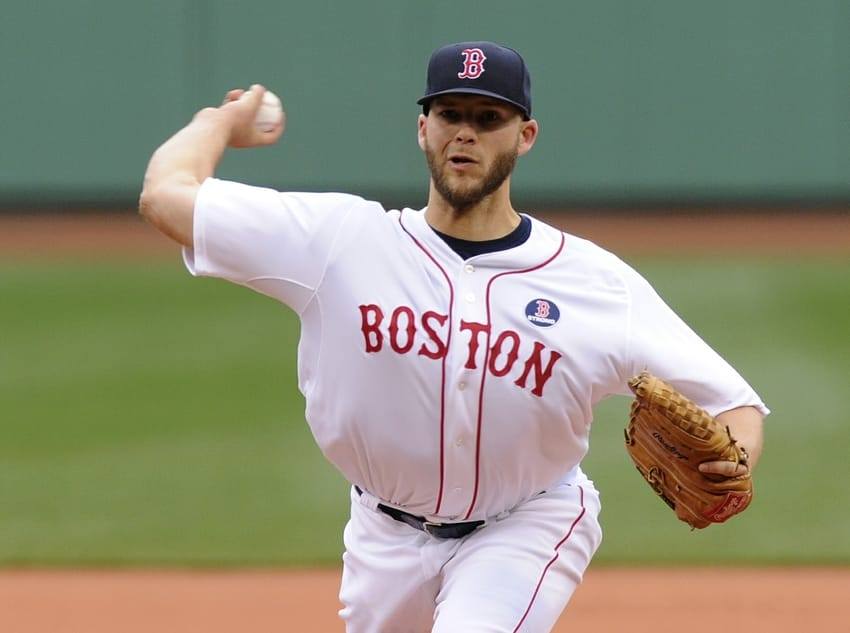Do you experience pain in your elbow when you pitch? If so, you might have a pitcher’s elbow. This condition is caused by repetitive stress on the elbow and can lead to inflammation, pain, and even loss of function. In this blog post, we will discuss the symptoms of pitchers’ elbow, how to treat it, and ways to prevent it from happening in the first place.
Contents
- 1 What Is Pitcher’s Elbow?
- 2 What Are the Symptoms?
- 3 What Causes It?
- 4 What Treatments Are Available?
- 5 How Physiotherapy Treats Pitcher’s Elbow
- 6 What Can I Do To Prevent It?
- 7 How Long Does It Take A Pitcher’s Elbow To Heal?
- 8 Speed Up Recovery By Doing These
- 9 Things To Avoid Doing With Pitcher’s Elbow
- 10 Conclusion
What Is Pitcher’s Elbow?

Pitchers’ elbow is a prevalent condition that affects many people. The elbow is the largest joint in the body, and it’s made up of several different parts. Pitchers use their elbows to help control the speed and direction of their pitches by bending back, which puts stress on the joint. This stress can cause enough wear and tear, leading to pain and discomfort.
Pitcher’s elbow is also called medial epicondylitis or medial tendinosis, as it involves a certain part of the elbow called the forearm flexor tendon.
A pitcher’s elbow can be caused by overusing your arm during pitching, which puts extra stress on the joint. However, there are some steps you can take to reduce your risk and help prevent this condition
What Are the Symptoms?
Symptoms of pitchers’ elbow can vary, depending on the severity of the injury. Some common symptoms include:
· Pain or tenderness along or around your elbow joint. This may be worse when throwing a pitch.
· Decreased range of motion. You may notice that your elbow doesn’t bend as smoothly or as far back as before.
· Swelling or stiffness along the joint line of your elbow.
If you are experiencing any of these symptoms, it’s important to seek medical attention right away. Your doctor can help diagnose pitcher’s elbow and determine the best course of treatment for you.
What Causes It?
Many different factors can contribute to pitcher’s elbow, they include:
· Overusing your arm during pitching. Repeatedly putting extra stress on your elbow joint can wear down the tissue, causing pain and inflammation.
· Weakness in the muscles around the elbow, which leads to improper stabilization of the joint as you throw a pitch. This also puts added strain on the tendons that connect your elbow to your forearm.
· Poor conditioning or lack of proper stretching before pitching, which can cause muscle fatigue and weakness.
What Treatments Are Available?
 If you think that you have a pitcher’s elbow, the first thing to do is stop pitching for a while so your arm can rest. If your symptoms don’t go away after a few days or weeks, you must see a doctor for an evaluation. Before you see your doctor, however, be sure to take some time off from throwing so that you can rest your arm and allow it to heal.
If you think that you have a pitcher’s elbow, the first thing to do is stop pitching for a while so your arm can rest. If your symptoms don’t go away after a few days or weeks, you must see a doctor for an evaluation. Before you see your doctor, however, be sure to take some time off from throwing so that you can rest your arm and allow it to heal.
The type of treatment will depend on the severity of your injury. Generally speaking, nonsurgical treatments are recommended first. These include resting your arm and doing exercise or physical therapy to prevent further stress on your elbow. If these treatments don’t help, then surgery may be necessary. For more severe cases, surgery is usually the best option to avoid long-term damage to your arm.
How Physiotherapy Treats Pitcher’s Elbow
 Physiotherapy treats pitcher’s elbow by reducing inflammation and relieving muscle stiffness around the elbow through targeted exercises. Physiotherapy helps in returning the patient to full physical function and increases the chances of a complete recovery. This form of treatment is often recommended by doctors to people suffering from pitcher’s elbow or other similar conditions.
Physiotherapy treats pitcher’s elbow by reducing inflammation and relieving muscle stiffness around the elbow through targeted exercises. Physiotherapy helps in returning the patient to full physical function and increases the chances of a complete recovery. This form of treatment is often recommended by doctors to people suffering from pitcher’s elbow or other similar conditions.
A physical therapist will help the patient by prescribing exercises, stretches and other such treatments that are focused on getting rid of the discomfort. They will also use different manual therapy techniques like massage to relieve pain and swelling. In addition to this, they may also give you hints on how to avoid any further injury around the elbow.
If you are suffering from pitcher’s elbow or similar conditions and want an effective treatment that does not involve a long recovery period, then physiotherapy is the right option for you. With the help of skilled physical therapists and other healthcare professionals, you can get back to doing the things that you love without having to worry about pain or discomfort in your elbow.
What Can I Do To Prevent It?
There are several different things you can do to prevent pitchers’ elbow from developing. Some of the most important steps include:
· Limiting your pitching practice to a certain number of innings or pitches each day, week, or month. This will give your arm time to recover between practices.
· Strengthening your arm muscles through targeted exercises. This will help you build up strength in the elbow and forearm, which can help reduce stress on the joints when pitching.
· Maintaining good posture at all times to prevent muscle imbalances that may put added strain on your elbow joint when throwing a pitch.
Whether you are a professional pitcher or just enjoy throwing pitches for fun, it’s important to take steps to prevent pitcher’s elbow from developing. By following these tips and paying attention to your body, you can help keep this condition at bay and continue enjoying the game of baseball.
How Long Does It Take A Pitcher’s Elbow To Heal?
Pain in the elbow is often referred to as ‘pitcher’s elbow. ‘ Pitchers’ elbows can be difficult to heal, especially if they are caused by overuse injuries. These types of injuries typically require rest from pitching, but depending on the severity of the injury, it can take anywhere from 3 to 12 weeks of rest before a pitcher’s elbow is healed.
However, when pitchers’ elbows are the result of trauma or an acute injury, it can take less time to heal. In these cases, a pitcher’s elbow may only need around 2 weeks of rest before it is looking and feeling better.
Regardless of what type of injury you are dealing with in your elbow, it is important to seek treatment from a medical professional if you notice any significant pain in your elbow. They will be able to help you determine the cause and severity of the injury and can offer advice on how best to treat it.
Speed Up Recovery By Doing These
If you are dealing with a pitcher’s elbow, there are some things that you can do that may help speed up healing time and reduce pain. These include icing the area and wearing a splint to keep the elbow in place.
Icing The Elbow
Ice is an effective way to treat pain and inflammation. Wrapping an ice pack around your elbow can help reduce swelling and dull some of the discomfort you are feeling. Applying pressure while icing will also help get rid of any built-up fluid.
Wearing A Splint
Another way to relieve discomfort and reduce the strain on your elbow is to wear a splint. A splint keeps your arm still so that it does not move around as much and puts less stress on your elbow joint. The splint will also help keep you from bending or moving your elbow in an unnatural way.
Trying these methods can help you get back to your daily activities more quickly, and it is important that you work with a doctor in order to determine the best treatment plan for your particular situation. If pain persists or worsens, however, be sure to seek medical attention as soon as possible.
Things To Avoid Doing With Pitcher’s Elbow
 There are a few activities you should be mindful of when suffering from pitcher’s elbow.
There are a few activities you should be mindful of when suffering from pitcher’s elbow.
First, you should avoid lifting heavy objects with your arm if possible. This can put additional stress on the healing tissues and cause pain, as well as slow down the healing process.
Another activity that can be damaging for pitchers’ elbows is playing sports that involve throwing movements, such as baseball or basketball. Additionally, you should avoid excessive use of your arm in general, particularly if it causes pain or discomfort.
If you are able to do these activities without experiencing any pain, then there is no need to avoid them altogether. However, if even small movements cause significant pain or discomfort, it is best to avoid them and focus on activities that do not involve your arm.
If you have recently been diagnosed with pitcher’s elbow, it is important to talk to your doctor or physical therapist. There are a number of treatment options available, including surgery and physical therapy, that can help relieve pain and speed up the healing process. With the right treatment plan, you can successfully manage your pitcher’s elbow and get back to doing all of your favourite activities.
Conclusion
In conclusion, a pitcher’s elbow is a condition that can result from overuse of the elbow. This could lead to pain and limited mobility. There are several ways that a pitcher’s elbow can be treated, such as resting the joint, icing it, and surgery. If you suspect that you may have this condition, it is important to speak with your doctor or physical therapist. Do not delay and see a specialist so you can begin on the path to recovery.
Physical Therapy help patients recover from pain. If you’re experiencing Back pain, Shoulder pain, Knee pain, Neck pain, Elbow pain, Hip pain, or Arthritis pain, a physical therapist at MantraCare can help: Book a physiotherapy session.


